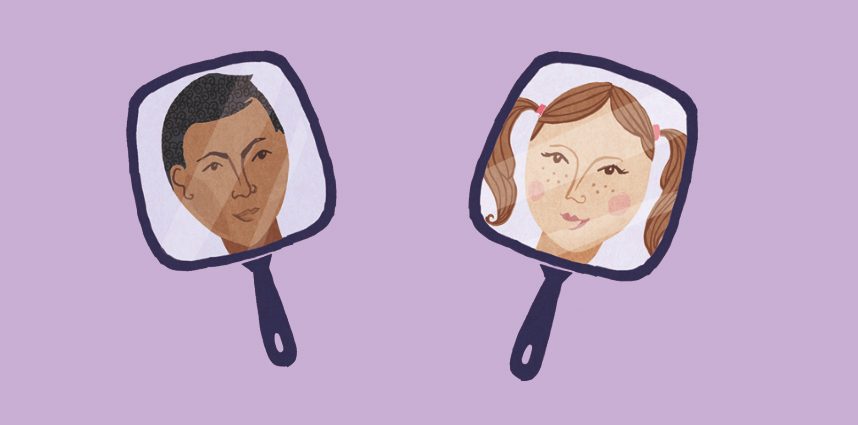What makes you, you? Our early ancestors realised that children often grew up to look and act like their parents (for better or worse!). But they had no idea why. Today we know that two things – environment and inheritance – influence how we turn out and the characteristics we have…
ENVIRONMENT AND INHERITANCE
Characteristics we get from our environment include things such as language, haircuts, or scars. The characteristics we inherit include eye colour, nose shape, and the shape of our earlobes (are yours attached?). But how do we inherit these things from our parents? Well, it’s all down to our genes.
SO, WHAT ARE GENES EXACTLY?
Genes are pretty tricky to explain – first you need to know what cells, chromosomes and DNA are. Ready? Here we go…

- All life forms are made up of cells (the building blocks of all living things). Humans are multicellular, meaning we are made of lots and lots of cells, not just one. There are 200 different types of cell in the human body and each type looks very different.
2. Most human cells contain a nucleus and this contains chromosomes. Most people have 46 chromosomes, 23 inherited from their mother and 23 from their father. Chromosomes are made up of long strands of tightly coiled deoxyribonucleic acid, or DNA for short.

3. DNA is a complex chemical compound that carries our genetic information. It is essentially the instructions for making a living thing. It’s made of four chemical bases: adenine (A); guanine (G); cytosine (C); and thymine (T). These bases pair up like best friends: A with T, and C with G. Each pair also attaches to a sugar molecule and a phosphate molecule. Together they form a spiral called a double helix. Each person’s DNA is unique—unless they are an identical twin.
- Finally, a gene is a small section of DNA. The gene is what we call the unit of inheritance – this means that our parents pass on their genes to us. Genes determine our unique physical features and other characteristics, such as blood group. Genes are also responsible for disorders such as cystic fibrosis. The complete set of genes in an organism is called its genome.
 Extract from The Book of Big Science Ideas by Freya Hardy of AQUILA magazine, published by Ivy Kids, RRP £14.99.
Extract from The Book of Big Science Ideas by Freya Hardy of AQUILA magazine, published by Ivy Kids, RRP £14.99.

